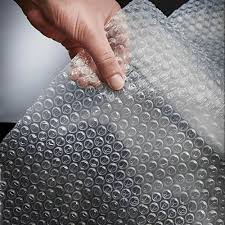For centuries, farming has relied on experience, observation, and sometimes just a bit of guesswork. Farmers would look at the sky, touch the soil, and watch their crops to decide when to plant, water, or harvest.
But now, thanks to the Internet of Things (Iot), farmers can do something that once seemed impossible — they can “talk” to their crops.

No, crops don’t send text messages (yet), but IoT devices can “listen” to them through sensors and relay critical information to farmers in real time. This isn’t science fiction. It’s happening right now in fields, orchards, and greenhouses across the world.
In this article, we’ll explore five powerful ways IoT is transforming farming, allowing farmers to truly understand what their crops need — and respond instantly.
1. Smart Soil Monitoring: Hearing the Roots’ Whisper
Healthy crops start with healthy soil. IoT soil sensors can detect moisture, pH levels, temperature, and nutrient content deep in the ground. This information is sent directly to a farmer’s smartphone or dashboard.
Example: If soil moisture drops below a certain threshold, the system alerts the farmer or even triggers irrigation automatically.

Why It Matters:
- Prevents overwatering and underwatering.
- Saves water — critical in drought-prone regions.
- Ensures crops have the right nutrients for optimal growth.
Real-World Impact: Studies have shown smart irrigation systems can reduce water usage by up to 30% while improving crop yields.
2. Precision Irrigation: Giving Crops a Drink at the Right Time
Traditional irrigation often runs on fixed schedules, regardless of whether crops actually need water. IoT flips that approach.
With IoT-powered irrigation, smart valves and controllers work with soil and weather sensors to deliver water exactly when and where it’s needed.
Example: A vineyard in California uses IoT to water grapevines only when moisture sensors show stress, improving grape quality while reducing water waste.
Why It Matters:
- Prevents root rot and fungal diseases caused by excess moisture.
- Optimizes resource use, cutting electricity and water bills.
- Improves plant health and yield quality.
3. Crop Health Monitoring: Catching Problems Before They Spread
Pests, diseases, and nutrient deficiencies can destroy crops fast. By the time the damage is visible, it’s often too late.

IoT tools like multispectral cameras mounted on drones or fixed in fields can spot early signs of stress invisible to the naked eye.
Example: A farmer might receive an alert about a patch of wheat showing unusual light reflection, indicating early fungal infection. They can then treat just that area instead of the whole field.
Why It Matters:
- Reduces pesticide use by targeting only affected areas.
- Saves money and reduces environmental impact.
- Protects overall yield by stopping problems early.
4. Climate and Weather Tracking: Listening to the Sky
Weather is one of farming’s biggest variables. IoT weather stations installed directly on farms give hyper-local data — far more accurate than a regional forecast.
These stations measure:
- Temperature and humidity
- Rainfall and wind speed
- Solar radiation
Example: If a sudden frost is predicted overnight, an IoT system can automatically activate heating lamps or cover crops.
Why It Matters:
- Minimizes weather-related crop losses.
- Helps farmers plan planting and harvesting more accurately.
- Enables proactive, not reactive, farming.
5. Smart Machinery: Farming on Autopilot
Modern tractors, harvesters, and planters can now be equipped with IoT sensors that collect and share real-time data.
Example: A connected tractor might adjust its seeding depth on the fly based on soil conditions it detects, ensuring uniform germination.
Some equipment can even be remotely monitored or controlled, meaning a farmer can check fuel levels, machine health, and operating efficiency from their phone.
Why It Matters:
- Reduces downtime with predictive maintenance alerts.
- Improves efficiency, lowering labor and fuel costs.
- Ensures operations are precise, saving time during peak seasons.
Why “Talking” to Crops Works
When we say farmers can “talk” to their crops, what we really mean is that crops can now communicate back through measurable signals:
- Soil moisture says, “I’m thirsty.”
- Leaf temperature says, “I’m stressed.”
- Growth patterns say, “I’m healthy” — or “I’m in trouble.”
IoT turns these silent signals into actionable data. It bridges the gap between plant biology and human decision-making, creating a feedback loop that’s faster and more accurate than ever before.
Challenges to Keep in Mind
While IoT in farming is powerful, it’s not without hurdles:
- Cost: Initial investment in sensors, devices, and software can be high.
- Connectivity: Rural areas often struggle with reliable internet access.
- Training: Farmers need to learn how to interpret and act on IoT data.
However, costs are dropping, solar-powered devices can work without grid electricity, and training programs are expanding worldwide.
The Future of IoT in Agriculture
The technology is evolving rapidly. Soon, we might see:
- AI-driven crop predictions based on IoT data.
- Swarm drones planting seeds or applying fertilizers.
- Self-healing IoT networks that work even without internet.
In short, IoT will become as essential to farming as the tractor once was.
Final Thoughts
Farmers have always been great listeners — to the land, the weather, and the rhythm of the seasons. IoT just gives them better “ears.”
By using smart sensors, connected machinery, and real-time data, farmers can give their crops exactly what they need, when they need it. It’s not magic — it’s just technology turning whispers from the field into clear, actionable messages.
And in a world where food demand is growing, water is scarce, and climate change is a daily challenge, this kind of communication could be the difference between surviving and thriving.




